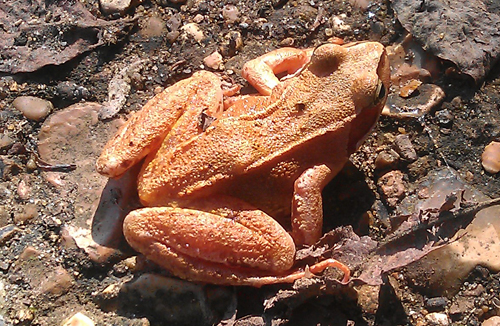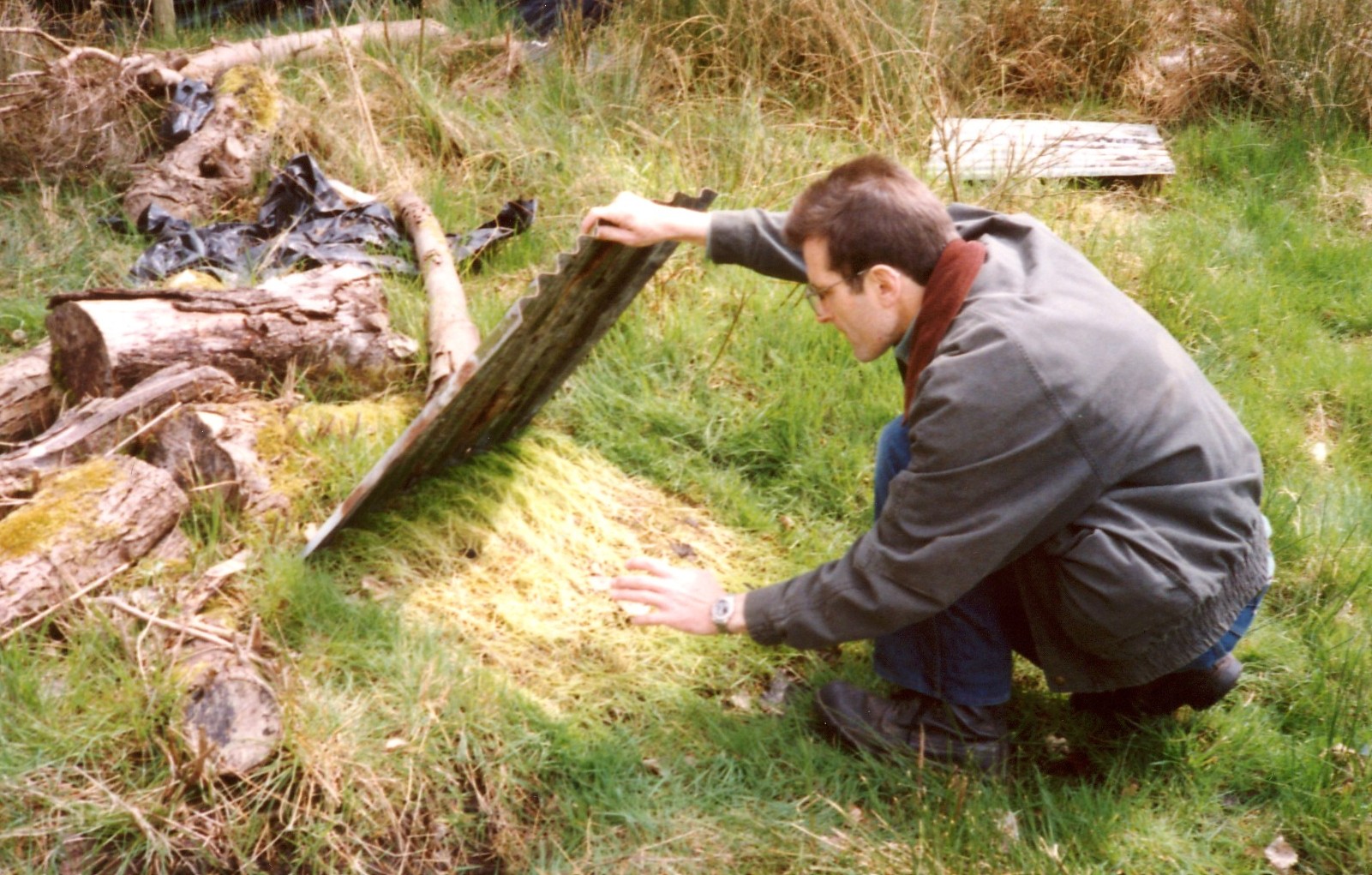Golden frog blog
Common Frog – Going for Gold?
Guest blog by WWT London Wetland Centre's Chief Ecologist Richard Bullock

The Common Frog (Rana temporaria) occurs in a wide range of damp and wetland habitats. It is the most widespread and commonly recorded of London’s amphibians e.g. it is the amphibian most likely to be encountered in urban gardens. On emerging from winter hibernation, breeding immediately follows - often in late February or early March. Frog spawn is laid in spring and froglets will usually leave the pond in mid-late summer, unless cold conditions result when tadpoles can otherwise overwinter.
The Common Frog is one of four species of amphibians to be found at the London Wetland Centre. The three other contemporary species include the Marsh Frog, Common Toad and the Smooth Newt. Of these, it is perhaps the frogs that show the greatest degree of colour variation of the four species to be found on the reserve. The Marsh Frogs vary in colour range from bright green, brown through to blackish colours. In some instances, colour variation can be accounted for by the frog’s ability to adopt the background habitat colour in which it resides. This is achieved on the amphibian’s skin through cellular structures known as melanophores.
However, distinctive colour forms of frogs have been observed in Britain. In the Common Frog, the most regularly reported colour forms include yellow, red and black – and, indeed, pink, orange, blue and albino forms exist too. Nevertheless, imagine his surprise then when Nick Oliver (WWT Learning Assistant) came across the frog shown in Nick’s picture. Initially, Nick thought he had ‘struck gold’, finding a highly unusual form of Common Frog on site. Indeed, the lustrous orangey gold colouration of the frog is strikingly apparent set against the brownish hogging of the path in Wildside where the frog was found.
For Nick, it was a riveting, if not un-‘frog’-ettable experience. Rumours abound at the London Wetland Centre as to how such a strange colour-form of the Common Frog came about upon the reserve. The most popular theory seems to be following an Olympic theme – that Nick’s frog was ‘going for gold’ in the long jump to Stratford.
For more information
BBC - Common frog
Surrey Amphibian and Reptile Group
Amphibian and Reptile Conservation (ARC)



